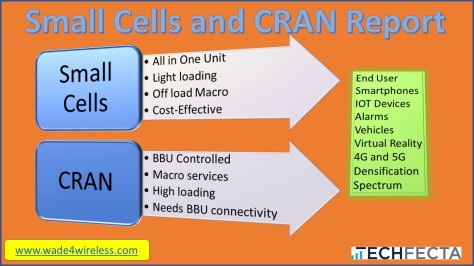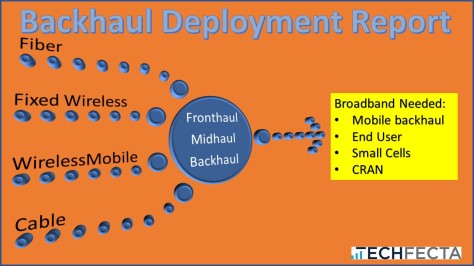OK, we’re talking wireless telecom here. Let’s cover some acronyms first.
- Radio Access Network = RAN
- Open RAN = oRAN
- Virtual RAN = vRAN
- Concentrated RAN = CRAN
- Software Defined Networking = SDN
- bove Ground Level = AGL
How do they tie together? I will tell you.
I was reading AGL magazine, http://www.aglmediagroup.com/current-issue/, actually, I was reading the print version. I actually like to read the magazine, and not just to read what the sexy writers say; I am talking to you Don Bishop (dbishop@aglmediagroup.com) and you Sharpe Smith (ssmith@aglmediagroup.com) because those guys are putting out great content almost daily. They also have sexy tower pictures in every print magazine!
Anyway, I digress. I was reading the article about SDN Radio Router Technology for Fronthaul Networks, http://digital.aglmediagroup.com/publication/?i=539366&article_id=3228884&view=articleBrowser&ver=html5#{%22issue_id%22:539366,%22view%22:%22articleBrowser%22,%22article_id%22:%223228884%22} in case you want to read it.
Grant Henderson did a good job showing how the fronthaul can be virtual. This has been an issue in the past, but Verizon has been betting heavy on CRAN. CRAN is where you have the BBU hotel in one location and then, within a certain physical distance, maybe 1 to 2 miles, you have the radio heads all over town or in a large venue. This would look like small cells, but it would have the full functionality of a macro site sector. Why? Because it’s cost effective and it allows management from one location of several cell sites. It also greatly helps spectrum reuse.
In the article mentioned above, Grant Henderson of Dali Wireless, (www.daliwireless.com) does a great job explaining how his SDN radio is an improvement over CRAN by making it a VRAN. Personally, he covered a lot of scenarios. I think he could have started with large DAS systems then maybe do an overview on larger networks.
However, this is a solid lesson that VRAN is going to overtake CRAN in the near future. It also allows the radio heads and BBUs to be core neutral. When the core and the RAN are different vendors, we are coming closer to creating an ORAN system. The openness that the carriers would like to have.
The DAS systems that Grant mentions in his article is a classic example of how there is greater opportunity for the newer RAN vendors to break into new markets. I know it is happening in China, but here in the US, the market is dominated by Nokia and Ericsson with smaller OEMs making inroads. Samsung has been moving into Sprint and Verizon with its 5G push, and it looks like they could make progress with other carriers too if they commit resources to the USA. Airspan has done a great job with Sprint and SpiderCloud, and Ruckus is making a push with small cells and CBRS.
My point here is that the article points out new ideas coming from disruptors that will make the networks seamless no matter who has the core. Ericsson and Nokia have great core solutions, but the RAN could start to open up to all.
Dali Wireless shows that the fronthaul is changing and that the vRAN radio heads can be made to work in a DAS system. It could be iDAS or oDAS, but the SDN radio is making this change possible. Fiber connections are better than ever and allowing more bandwidth to be passed in this equipment. SDN radios are making it possible for the traffic and processing to be offloaded and done on the radio. The BBU can hand off that extra work to the edge router. Now the router is taking away a lot of the distance limitations that are there in CRAN.
We will need to implement this in 5G to make good things happen to the network and meet the high expectations placed with a 5G network. SDN routers are going to be the difference between vRAN and CRAN. It has to happen sooner than later.
Grant has some great DAS designs that I love. I think he could break into the market using these first, then maybe take on larger projects. I would recommend that he would use this to connect several buildings or a stadium. This proves the concept works. Then we have the densification needs of any major city. That is really a very similar concept.
The thing about 5G is that the speeds and bandwidth requirements will depend on densification. Densification is a requirement of broadband because the loading of a site is heavier than ever. Each user will be requesting a lot of bandwidth and if they have an IOT offering but may have hundreds of smaller non-discrete devices on it.
By the way, if you think ORAN is not a big deal, then think again. Even Verizon joined the oRAN group; they were already members of xRAN. They see the future as an open sourced model with the ability to buy radio heads form anyone, not just the bigger OEMs.
I believe the idea if oRAN is to drive down the costs of radio heads and that the model will no longer be a hardware model but a subscription model. This sounds good up front, but the subscription model means endless payments on a network that you can’t shut down with losing all of your customers. They pay licensing now, but they want the CapEx to go down and the OpEx to be stable. It’s going to be a challenge for the carriers in 2022.
The idea of vRAN is not just a hardware and licensing issue. The design will have to be made easier and automatic. If they use massive MIMO heads, that could make that automated. Then you have the installation piece of it, that will not go away, but the carriers have already squeezed everything they could out of that. We’ll see what they do next to reduce costs. The more they drive down installation costs, the more they will drive up permitting costs. That’s what I have seen.
Finally commissioning and integration. They will make as much of it plug and play as possible. That is here for small cells and close for mini-macros. Macro sites still need a full C&I process. I think that PnP will be inevitable where possible.
One thing that has gotten more expensive, backhaul. More fiber strands are required for the new fronthaul systems. You need to be connected and have plenty of bandwidth for data and overhead. It’s going to be more and more demanding. The CapEx will increase as well as the OpEx for backhaul. The only saving grace is that SDN routers and router muxing is improving every day. More data over the same fiber, that’s the next dream.
Maybe wireless backhaul will be a lifeline, but fiber can usually be expanded easier. I love wireless backhaul, but the needs have been outgrowing the rate at which they can improve wireless systems. The good news is that Sprint has plenty of 2.5GHz spectrum to do both backhaul and last mile. Way to go Sprint! Oh, sorry, I mean way to go new T-Mobile!
Resources:
- https://www.fiercewireless.com/wireless/verizon-joins-o-ran-alliance-board
- http://digital.aglmediagroup.com/publication/?i=539366&article_id=3228884&view=articleBrowser&ver=html5#{%22issue_id%22:539366,%22view%22:%22articleBrowser%22,%22article_id%22:%223228884%22}
- http://www.aglmediagroup.com/current-issue/
- http://www.daliwireless.com/4g-to-5g-vran-and-oran-to-the-rescue/
- https://www.sdxcentral.com/articles/news/xran-open-vran-and-openran-whats-the-difference/2018/04/
- https://www.fiercewireless.com/tech/editor-s-corner-why-wireless-industry-running-from-cran-to-vran-to-oran
- https://www.fiercewireless.com/tech/t-mobile-sprint-orange-signal-hesitation-vran-and-oran-push
Thank you for your time and learning! We’re all learning as we go, any shortcut will help! It adds value.
Be smart, be safe, and pay attention!
See Ya!
More products from TechFecta and Wade4Wireless! I appreciate all of your support. Thank you so much!









